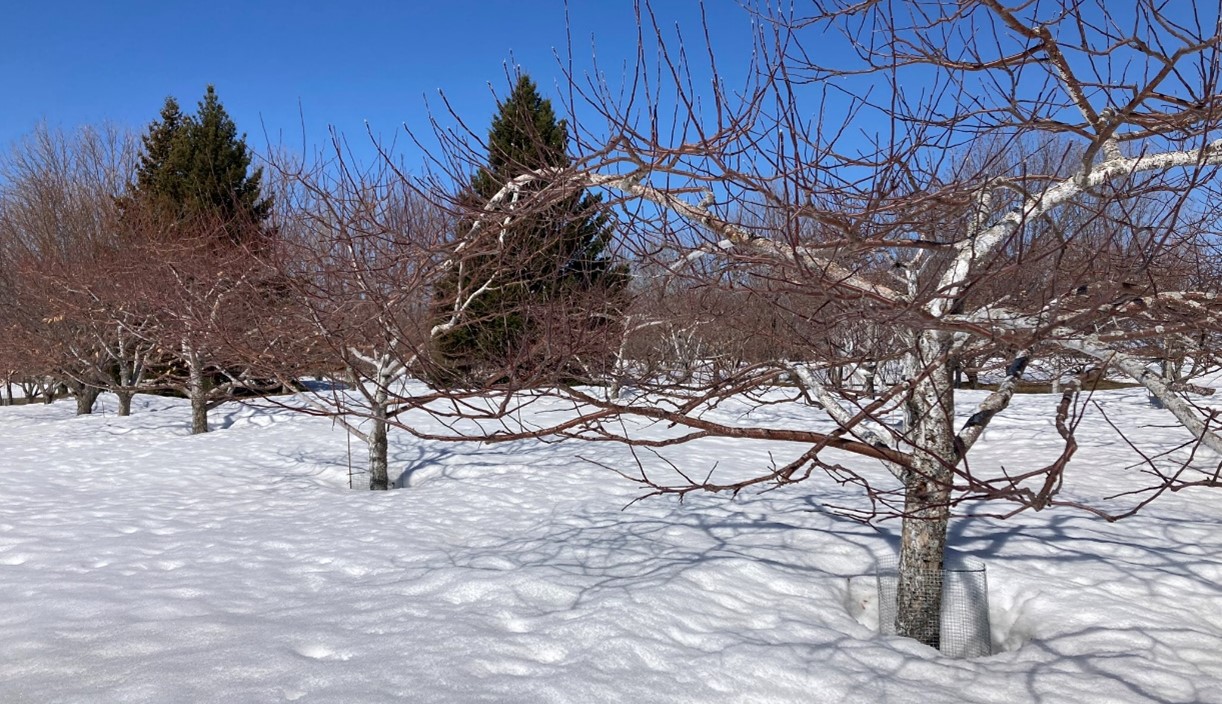May’s ‘Winter’ Orchard Update…and "No Mow May”
If you know me, you know I love winter and especially snow. But perhaps this year is getting a bit ridiculous.
CREC has recorded about 90 inches of snow and most of it has accumulated in the sheltered areas of the arboretum and orchard. My first day of pruning was April 17 when I shoveled out the gate and tromped around the apple trees on my snowshoes. Then pruning was paused by another 8 inches of snow! By this last week of April, most of the orchard still has 1 foot of snow with many areas under of 2-3.5 feet of snow.

I appreciate the snow after the very, very dry fall we had in 2022. The first blizzard on November 10 thawed any frozen ground and began to insulate the plants and insects for the rest of the winter. As with a previous year of snow on warm ground, I expect to see an abundance of bumble bees and other ground-nesting bees this spring. Hopefully their emergence comes at the same time as the haskaps flower – and the plants will be able to set larger crops.
No Mow May is here!
While I love the idea of No Mow May, which is to provide early flowers for early bees, research has shown it to not be totally fabulous. The idea is just as it says. But if you don’t mow at all for a month, there will be extra emissions due to the hard work your mower has to do later and the grass will be weakened for some time after the removal of more than a third of its height.
Susannah Lermann, a researcher with the USDA Forest Service, says that a lawn that grows to five inches, which corresponds to mowing approximately every two weeks, “supported the highest abundances of bees, and the abundance was related to the amount of flowers present (e.g., dandelions, clover, violets).”
In reading university research, best practice is to use as little pesticide as possible on your lawns and allow some flowering plants to exist there - like clover, an original part of lawn seed mixes before herbicides were advertised for ‘pure grass’ lawns. Mow high, at 3.5-4 inches and let the clippings fall. This fertilizes the grass and mulches it to prevent weeds in the first place.
And to really help bees and other insects? Make your lawn smaller by creating areas of native plants that flower throughout the year. If you are designing a new area, know that bees like bigger clumps of the same flowers rather than a completely mixed planting. But don’t sweat it – everything helps. And most native bees are ground dwelling! So try to leave some areas of soil untilled and unmulched.


Insect numbers are in steep decline and this is bad for everything on earth. We can all help a little. https://www.npr.org/sections/goatsandsoda/2022/02/24/1082752634/the-insect-crisis-oliver-milman
Kathy Wiederholt
Kathy.Wiederholt@ndsu.edu
Fruit Project manager
